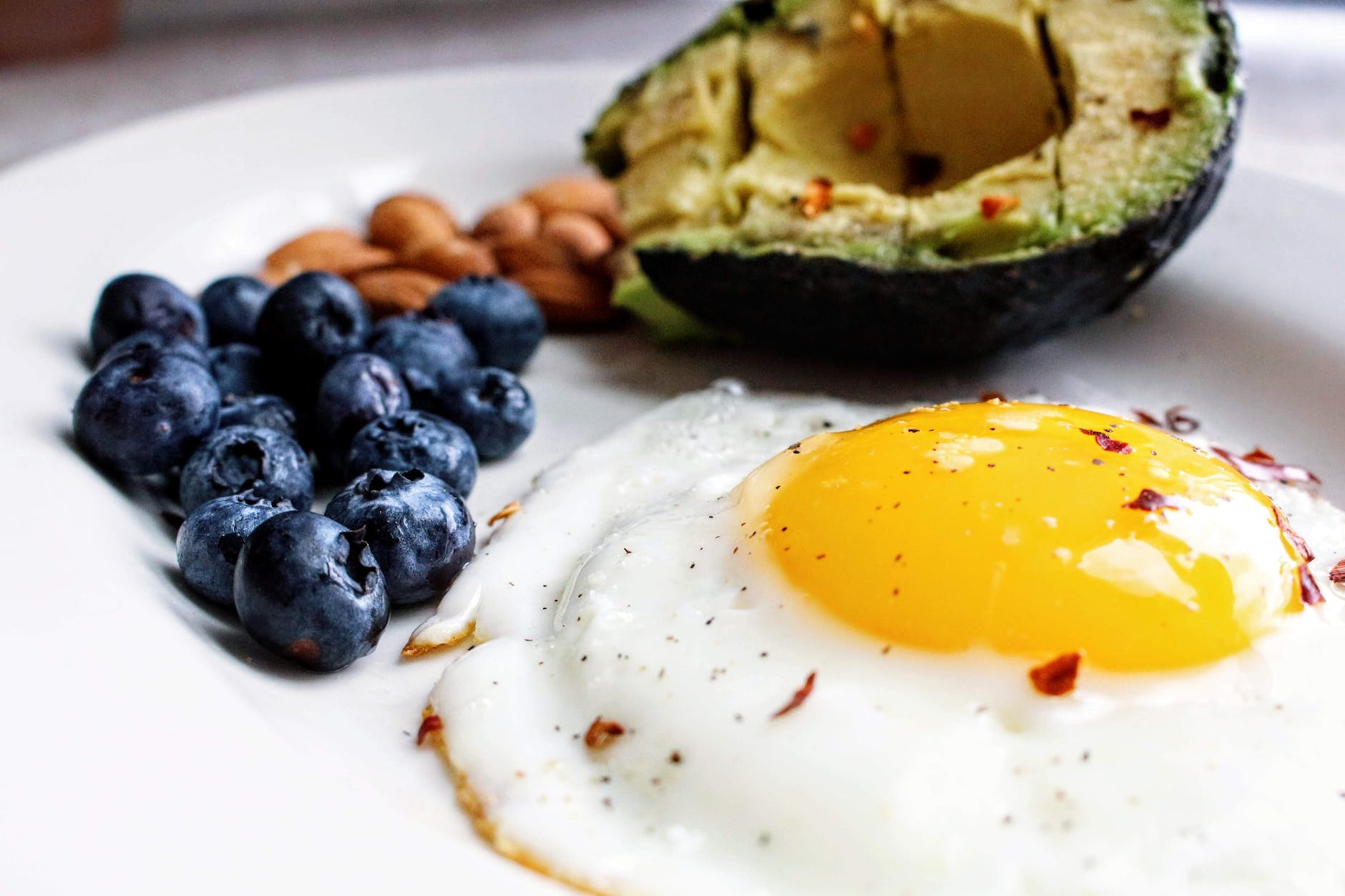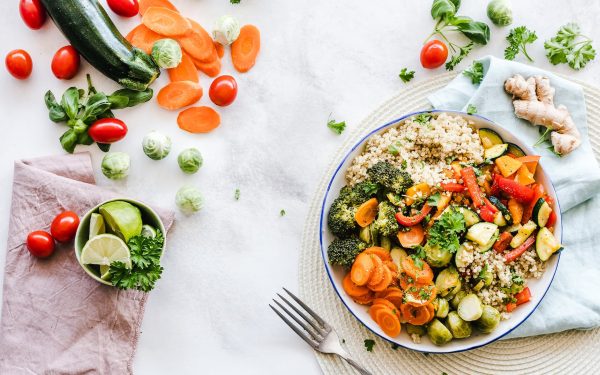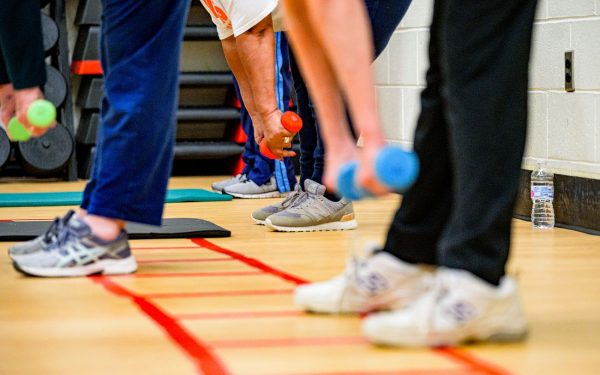A Straightforward Guide to Healthy Weight Loss

Introduction
Becoming or maintaining a healthy weight can be the biggest thing you do to improve your health – It does take some effort, but the rewards can be literally life-changing.
Understanding Your Body’s Needs

Your body needs a minimum amount of calories just to stay alive. It takes calories to: think, breathe, make your heart beat, to yawn, to cough, to move your eyes etc.
There is a measurement called the BMR (Basal Metabolic Rate) which is the number of calories you need just to survive – eating less than this number will eventually lead to starvation (although, as you lose weight your BMR will also decrease. This is one cause of weight loss rate decreasing).
Your BMR is calculated most commonly using the “Mifflin-St Jeor Equation”. There are many calculators you can use online.
It uses your height, weight, age and sex to determine an estimation of how many calories your body burns just by existing.
Human BMR tends to fall between 1000-2000 calories per day, but can also be outside of this range. I am a pretty average sized male and my BMR is around 1800 calories.
Understanding the Basics

BMR (Basal Metabolic Rate)
Your BMR is the number of calories your body needs to maintain basic functions like breathing and circulation. You can calculate your BMR using various online calculators.
TDEE (Total Daily Energy Expenditure)
TDEE is your BMR plus the calories burned through physical activity. Knowing your TDEE helps you set a realistic calorie goal for weight loss.
NEET (Non-Exercise Activity Thermogenesis)
NEET refers to the calories burned through everyday activities like walking or doing household chores. Incorporating more NEET can help you burn extra calories without formal exercise.
Hydration is key – The most abundant substance in the human body is water, try to drink around 2700 ml/91 oz per day for women, Men need 1 litre more; 3700 ml/130 oz. There are studies to suggest that (unsurprisingly) being hydrated can aid in increasing metabolism of fat, aka fat burn.
Also, do note that 1L or 35 fl.oz of water weighs 1kg or 2.2lbs, – so don’t be doing your weigh-in after drinking (or eating).
Creating a Balanced Diet

Macronutrients:
I’d say Macros are a joint 2nd place with Exercise in terms of importance in FAT loss – notice I didn’t say weight loss here. It is one thing to lose weight, but for that weight not to be muscle you have to take into consideration which Macros you need.
What are the Macronutrients?:
Protein, Fats and Carbohydrates. (in order of fat loss importance).
Protein is what you need to maintain or build muscle tissue.
Fats are energy dense molecules vital for the production of hormones.
Carbohydrates are a family of sugars, they provide shorter-term energy for the body.
There aren’t really any “bad” dietary proteins as far as I am aware, but there certainly are good and bad fats. See this British Heart Foundation Article, for a quick and helpful overview. Don’t forget to come back though!
Fats explained – types of fat – BHF
As for Carbohydrates, there is a general rule: “The simpler, the worse for fat loss”.
The simpler (read: smaller) a Carbohydrate is, the quicker it can be broken down and absorbed. It also causes a sharper insulin spike, and insulin is the chemical messenger that tells your body there is food so let’s grab some to take into the cells for energy. The problem is, if you don’t need that amount of energy right now (like during exercise), the body will tell it to stay in storage for now (in the form of body fat).
This storage mechanism is great for keeping us warm and keeping us safe from periods of starvation. An evolutionary superpower, but in today’s world of easy access, energy filled food, it is very easy to consume more than we need for the day.
As another sidenote, it is often quite helpful to look back to our early-human ancestors for answers to our modern problems. This is one example of this being useful to highlight why exactly we are great at getting fatter.
Big carbs are often labelled Low G.I. and small ones are High G.I.
G.I. = Glycaemic index = a measurement for how quickly a carb is digested and therefore how healthy it is.
Glycaemic is a mix of 2 words “Glyco-” referring to sugar and “-aemia” meaning “condition of the blood”
How do you get sugar from Glyco? – it comes from the Greek “Glukus” meaning “sweet”
So High G.I. therefore, roughly means high sugar in blood.
Building an Effective Exercise Routine

Setting Realistic Goals:
Setting realistic goals is crucial, especially when many fitness influencers these days promote their progress after relying on performance-enhancing drugs. For example, aiming to gain 25 kg of muscle in a year or lose 20 lbs in a week is unrealistic. When it comes to fat loss, it’s advisable to aim for a rate of 0.5 to 1% per week. To shed a pound of fat, you’ll need a caloric deficit of approximately 500 calories from your Total Daily Energy Expenditure (TDEE). Similarly, for muscle gain, it’s generally believed that you should consume no more than 250 calories above your TDEE per week, this number is lower because the rate at which you can gain lean tissue is much slower than fat gain – by eating more than you need, you will gain extra fat on top of that muscle. It should be noted that you will gain some fat along with your muscle, but by keeping the extra calories conservative you are likely to “lean bulk”
I would like to add – you don’t need to eat more than you burn to improve your physique. You can do this just eating at your TDEE (maintenance calories). Eating more than the TDEE just speeds this process up.
Choosing the Right Exercise for You:
I’ve delved into this topic in another post, so I’ll keep it brief here. Exercise choices generally fall into three categories: muscle gain, cardiovascular health, and bodyweight exercises.
Muscle Gain vs. Cardio vs. Bodyweight:
You might find it odd to see ‘bodyweight’ as a separate category. While bodyweight exercises can contribute to muscle gain, they don’t offer the same level of progressive overload as weightlifting. Likewise, bodyweight exercises can improve cardiovascular health but not as effectively as running, cycling, or swimming.
The Science of Exercise:
Your body and brain adapt to what you practice. If you’re aiming for better heart health, engage in activities that elevate your heart rate for extended periods, like cycling or running. For muscle gain, lifting heavy weights is key. As your muscles adapt and grow, you’ll need to increase the weight to continue progressing. This is where bodyweight exercises hit a ceiling.
Pros and Cons of Bodyweight Fitness:
Without sounding too biased, the beauty of bodyweight exercises lies in their accessibility. You don’t need specialized equipment, ample space, or a lot of time. While they may not offer the specific benefits of cardio or weightlifting, they provide a balanced compromise. In my experience, bodyweight routines have served me better than my previous weightlifting regimens purely because they have a lower “activation energy” meaning there are less excuses to start and therefore a higher level of adherence to the routine.
The Caloric Equation:
When it comes to weight loss, cardio generally comes out on top because it burns more calories. While there’s a notion that weightlifting has an ‘afterburn’ effect, and whilst this is true – it is hard to measure and will make tracking deficits harder. For most people, the majority of your caloric deficit will come from dietary changes. For instance, it’s easier to skip a chocolate bar than to run for 30 minutes to burn off 200 calories. However, exercise still plays a crucial role in overall health and allows for a more generous caloric intake. If your Total Daily Energy Expenditure (TDEE) is 3,000 calories due to high activity levels, a 500-calorie deficit still allows you to consume 2,500 calories. In contrast, if you’re sedentary with a TDEE of 2,100 calories, you’d need to limit yourself to 1,600 calories to lose one pound of fat per week (which for me would be hellish).
The Importance of Consistency in Fitness:
Consistency is the linchpin of any successful fitness journey. I’m not advocating for a lackadaisical approach, like hitting the gym once a month. What I am emphasizing is the value of a steady routine over a sporadic one. Likewise with the diet; it is much easier to stick to a deficit which is manageable to you, whether that is -200 calories or -750 calories, the diet you will stick to is the best for you.
The Habit Loop:
Let’s say you start with one day a week, then sporadically bump it up to two or three days. This inconsistency isn’t as beneficial as sticking to a regular two-day-a-week regimen. While the physiological benefits are important, the psychological aspect of habit formation is crucial. Developing a consistent habit increases the likelihood of long-term commitment, leading to better results.
The Slippery Slope of Inconsistency:
It’s surprisingly easy to lose track of time between workouts when you’re not on a regular schedule. One missed day can quickly snowball into two, then three, and so on. On the flip side, if you’ve cultivated the habit of going every third day, your internal clock will nudge you when it’s time for your next session.
Again, this is outlined in my other post on exercising and spoon theory.
Monitoring Progress and Staying Motivated

Tracking Your Achievements: A Guide to Measurable Progress
Keeping tabs on your achievements is arguably the simplest part of your fitness journey, but it’s crucial if you’re serious about making progress. From calorie counting to progress pictures, tracking helps you stay on course and fine-tune your approach.
The Tools of the Trade:
To get started, you’ll need a digital food scale for weighing portions, which usually costs around £10/$12. Pair this with a calorie-tracking app like MyFitnessPal, and you’re setting yourself up for a smoother journey.
Do not eyeball food! – unless you are a seasoned dieter and out at a restaurant when you can’t weight food. Professional bodybuilders weight their food, if they need to then so do you. It is far too easy to underestimate calories in food, ignoring things like sauce and cooking oils is a big one.
The Art of Progress Pictures:
While numbers on a scale can be helpful, progress pictures offer a more tangible sense of achievement. If you do opt for a scale, make it a ritual: weigh yourself first thing in the morning and after using the bathroom to eliminate variables like water weight. Log these numbers into MyFitnessPal to track your downward trend over time.
The Rollercoaster of Weight Fluctuations:
Don’t be disheartened by occasional spikes or plateaus; these are normal. Factors like hormonal changes, salt intake, and carbohydrate consumption can cause your weight to fluctuate. For instance, every 100g of carbs you consume can lead to retaining 300-400g of water weight. This is why people often see dramatic weight loss in the first couple of weeks—it’s mostly water, not fat.
The Long Game:
Weight loss is a marathon, not a sprint. Crash diets with severe caloric deficits are unsustainable and often counterproductive. You might lose weight quickly, but you’re likely to gain it back, sometimes even more than you lost. The key is to adopt a sustainable approach: aim for a 500-calorie deficit or a weight loss of around 1lb/0.45kg per week.
Addressing Common Concerns

Disclaimer: Please see your GP or family doctor before engaging in any exercise plans, which are new to you if you have any medical diagnosis which you think might affect your fitness journey.
The Psychological Aspect of Weight Loss
Losing weight isn’t just a physical challenge; it’s a psychological one as well. When you start shedding pounds, you might notice that you appear less toned in the mirror. This is often due to the loss of water weight stored in your muscle tissue, which is held by glycogen. Reducing carbohydrate intake will lower glycogen levels, leading to less water in your muscles and a decrease in muscle volume relative to body fat. This can create the illusion that you’re losing muscle and gaining fat, which is not the case.
Adapting Your Fitness Regime
During this phase, you may also experience a dip in strength and stamina. To counter this, consider reducing the volume of your workouts while maintaining the same intensity. This approach helps prevent overtraining and is especially useful for those who, like me, have cycled between cutting and bulking in bodybuilding.
The Sustainability Question
The saying “bulk until you hate your reflection, diet until you hate life” captures the emotional rollercoaster of traditional fitness models. However, this approach isn’t sustainable for everyone. A more balanced routine, although potentially slower in yielding results, offers fewer emotional ups and downs.
Common Pitfalls in Weight Loss
Failure in weight loss often stems from several factors:
– Inaccurate calorie tracking
– Overestimating calories burned through exercise
– Inconsistency in your fitness routine
– Plateauing or retaining water weight while losing fat
These factors can be influenced by hormonal fluctuations and dietary variations, sometimes masking changes in body weight for up to 4-6 weeks.
Conclusion
In summary, weight loss is a complex journey that involves both physical and psychological elements. From understanding the initial changes in your body composition to adapting your workout routine and avoiding common pitfalls, being informed is key. Remember, it’s not just about the numbers on the scale; it’s about creating a sustainable, healthy lifestyle.
So, are you ready to embark on your weight loss journey? Feel free to share your thoughts, questions, or experiences in the comments below. Your engagement not only enriches this community but also fuels your own commitment to a healthier you.



